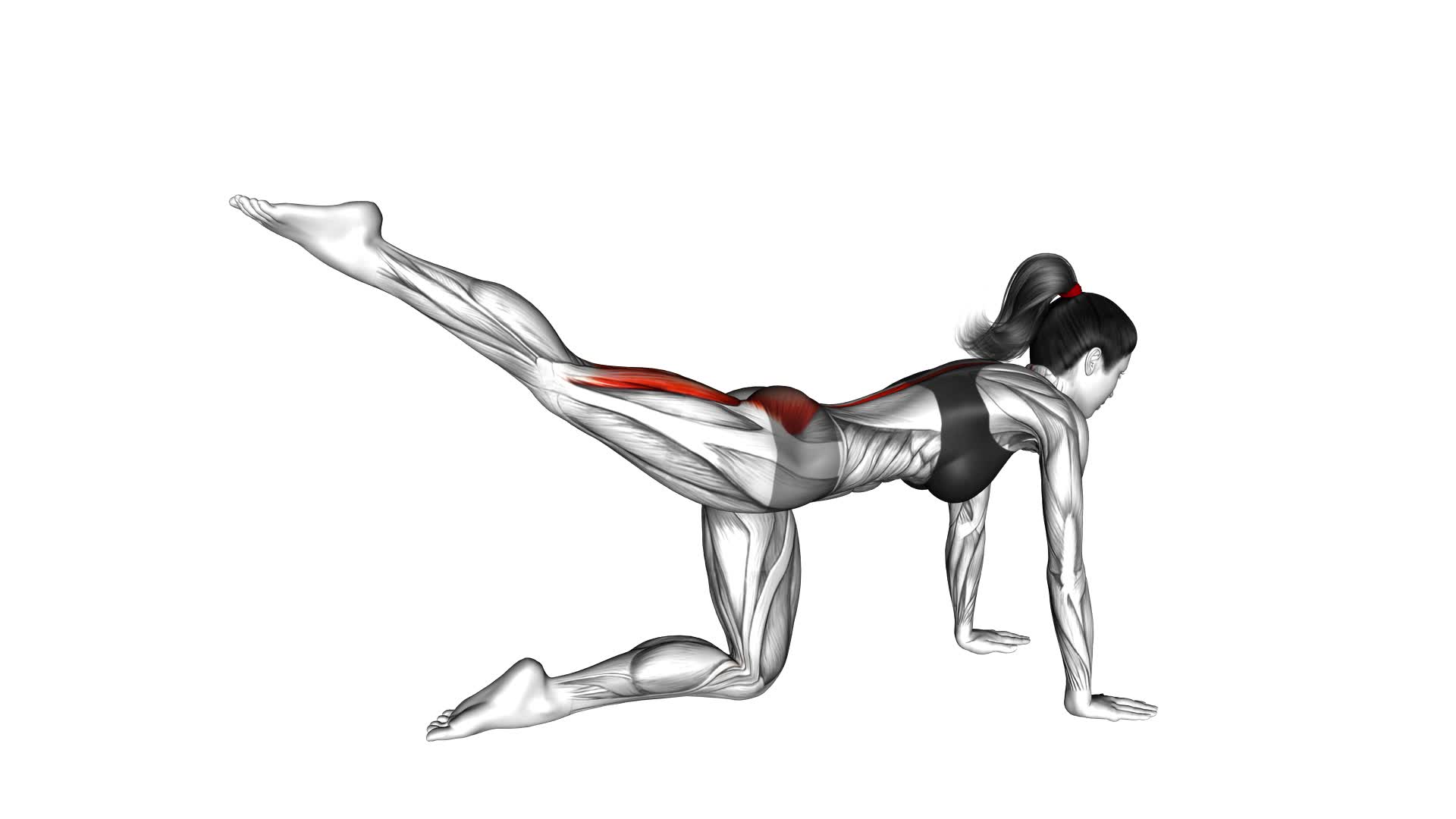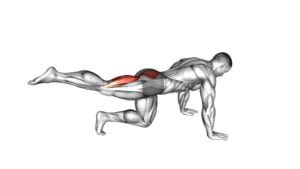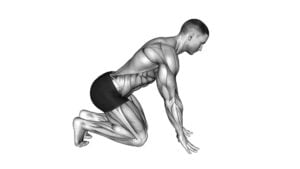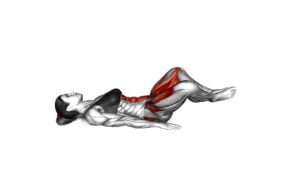Kneeling Pulse – Video Exercise Guide & Tips

Get ready to sculpt and strengthen your core with the Kneeling Pulse! In this video exercise guide, you'll discover the benefits of this effective move, along with proper form and technique.
Watch This Exercise Video
Whether you're a beginner or looking for a challenge, we've got tips and advanced variations to help you level up.
Grab your equipment and get ready to feel the burn as you follow along with our sample workout routine.
Let's get started!
Key Takeaways
- The kneeling pulse exercise improves breathing and muscle activation.
- It strengthens the core, glutes, and quadriceps.
- It enhances balance and coordination.
- It improves posture and stability.
Benefits of the Kneeling Pulse
You can experience numerous benefits from incorporating the kneeling pulse into your exercise routine. This exercise focuses on proper breathing and muscle activation, which are essential for maximizing your workout.
When performing the kneeling pulse, it's important to breathe deeply and exhale fully to engage your core muscles effectively. Proper breathing not only allows you to maintain stability but also helps to oxygenate your muscles and increase endurance.
By activating your muscles during the kneeling pulse, you can strengthen your core, glutes, and quadriceps. This exercise specifically targets these areas, helping to improve your posture and overall stability.
Additionally, the kneeling pulse can enhance your balance and coordination, as it requires concentration and control. By incorporating this exercise into your routine, you aren't only building strength and stability but also improving your overall fitness level.
Now that you understand the benefits of the kneeling pulse, let's move on to the next section to learn about proper form and technique.
Proper Form and Technique
To perform the kneeling pulse exercise with proper form and technique, begin by positioning yourself on the mat. Start by kneeling down on all fours, ensuring that your hands are directly under your shoulders and your knees are directly under your hips. Your spine should be in a neutral position, with your head aligned with your spine. Engage your core muscles by drawing your belly button towards your spine.
Now, let's focus on the proper form and technique for the kneeling pulse exercise. Maintain a stable and controlled movement throughout the exercise. Avoid arching or rounding your back, as this can put unnecessary strain on your spine. Keep your shoulders relaxed and away from your ears.
One common mistake to watch out for is lifting your hips too high or sinking them too low. It's important to keep your body in a straight line from your head to your knees. Another mistake is rushing through the exercise. Take your time and focus on the quality of each repetition.
To modify the kneeling pulse exercise, you can perform it on an exercise ball or a Bosu ball to challenge your stability. To progress the exercise, you can add resistance by using ankle weights or resistance bands.
Now that you know the proper form and technique for the kneeling pulse exercise, let's move on to the equipment needed for this exercise.
Equipment Needed for the Exercise
To perform the kneeling pulse exercise with proper form and technique, the only equipment needed is a mat. This simple piece of equipment provides cushioning and support for your knees and prevents discomfort during the exercise.
However, if you're looking to add some variety to your workout routine, there are a few additional items you can incorporate:
- Resistance Bands: By attaching a resistance band to a sturdy anchor point and placing it around your hips, you can add resistance to the kneeling pulse exercise. This increases the challenge and helps to strengthen your glutes and hip muscles.
- Dumbbells: Holding a pair of dumbbells in your hands while performing the kneeling pulse exercise can engage your upper body muscles, including your biceps and shoulders. This adds an extra element of resistance and helps to tone your arms.
- Stability Ball: Placing a stability ball between your back and a wall can provide added support and stability during the exercise. This modification is especially helpful for individuals who struggle with balance or have lower back issues.
By incorporating these equipment variations, you can modify the kneeling pulse exercise to target different muscle groups and increase the intensity of your workout.
Now, let's move on to some tips for beginners to ensure you get the most out of this exercise.
Tips for Beginners
For beginners, it's important to focus on proper form and technique when performing the kneeling pulse exercise. This exercise may seem simple, but it's crucial to avoid beginner mistakes and common misconceptions to maximize the benefits and prevent injuries.
One common mistake beginners make isn't engaging their core muscles properly. To avoid this, make sure to maintain a neutral spine and engage your core throughout the exercise. This will help stabilize your body and prevent any strain on your lower back.
Another mistake is rushing through the movement. Many beginners tend to pulse quickly without focusing on the muscle contraction. It's important to take your time and perform each pulse with control, feeling the muscles working with each repetition.
A common misconception is that this exercise only targets the glutes. While it's true that the glutes are the primary muscles being worked, the kneeling pulse also engages the core, quadriceps, and hamstrings. Make sure to engage all these muscles throughout the exercise to get a full-body workout.
Advanced Variations to Challenge Yourself
Are you ready to take your workout to the next level?
In this section, we'll explore advanced variations of the kneeling pulse exercise that will challenge you and push your limits. These variations are designed to increase the difficulty levels, helping you build strength, endurance, and flexibility.
Get ready to elevate your fitness game and see amazing results!
Increased Difficulty Levels
Challenge yourself with five advanced variations of the kneeling pulse exercise. These modifications will help you take your workout to the next level and continue your intensity progression.
- Single-leg kneeling pulse: Lift one leg off the ground while maintaining the kneeling position. This variation engages your core and challenges your balance.
- Plyometric kneeling pulse: Add a jump to your kneeling pulse, exploding off the ground and landing back into the kneeling position. This dynamic movement increases the cardiovascular demand and strengthens your lower body.
- Weighted kneeling pulse: Hold a dumbbell or kettlebell in your hands while performing the kneeling pulse. This added resistance increases the challenge and helps build muscular strength.
Pushing Your Limits
To continue challenging yourself and pushing your limits, try incorporating these advanced variations of the kneeling pulse exercise.
These variations will help you expand your capabilities and build mental fortitude.
One advanced variation is to perform the kneeling pulse exercise with weights. Hold a dumbbell or kettlebell in each hand and maintain the same pulsing motion while keeping your core engaged and your back straight.
Another advanced variation is to add an unstable surface, such as a Bosu ball or a stability disc, under your knees. This increases the difficulty of the exercise by challenging your balance and stability.
By incorporating these advanced variations, you can take your kneeling pulse exercise to the next level and continue to challenge yourself.
Now, let's move on to a sample kneeling pulse workout routine.
Sample Kneeling Pulse Workout Routine
Now let's talk about the key points of the kneeling pulse exercise.
First, it's important to understand the proper form by watching a demonstration. This will ensure that you're performing the exercise correctly and maximizing its benefits.
Speaking of benefits, the kneeling pulse targets your core muscles and helps improve stability and balance.
Proper Form Demonstration
Start by positioning yourself on your hands and knees for the kneeling pulse exercise. To ensure proper form and get the most out of this workout, keep the following tips in mind:
- Common Mistakes:
- Avoid rounding your back or slouching your shoulders. Keep your spine neutral and engage your core.
- Don't rush through the movement. Maintain control and focus on the contraction of your glutes and hamstrings.
- Avoid overarching your lower back. Keep your pelvis stable and maintain a slight tilt to engage your glutes effectively.
- Modifications:
- If you have wrist discomfort, you can perform the exercise on your forearms instead of your hands.
- To make it more challenging, you can add resistance by using ankle weights or resistance bands.
- If you have knee issues, you can place a folded towel or mat under your knees for added cushioning.
- Progressions:
- Once you have mastered the basic form, you can increase the range of motion by extending one leg back while maintaining the pulse motion with the other leg.
- You can also incorporate variations like pulsing to the side or pulsing while lifting your leg to the side.
Benefits of Kneeling Pulse
As you continue your kneeling pulse exercise routine, you'll experience the numerous benefits it offers, including improved glute and hamstring strength.
But that's not all! Proper breathing during the exercise can enhance your overall workout experience. By taking deep breaths in and exhaling fully, you can optimize oxygen flow to your muscles, increasing their efficiency and endurance. Additionally, practicing proper breathing techniques can help you maintain focus and reduce stress.
Another benefit of the kneeling pulse is its ability to activate multiple muscle groups simultaneously. As you pulse up and down, your glutes, hamstrings, and core are engaged, promoting stability and balance. This compound movement not only helps tone and strengthen your lower body but also improves coordination and body awareness.
Incorporating the kneeling pulse into your workout routine can provide you with a challenging and effective exercise that delivers a range of benefits for your body and mind.
Frequently Asked Questions
Can the Kneeling Pulse Exercise Help With Improving Posture?
Improving your posture is essential for overall health and well-being. One exercise that can help with this is the kneeling pulse.
By incorporating the kneeling pulse into your workout routine, you can strengthen your core muscles and improve your posture. This exercise specifically targets the muscles in your back and shoulders, promoting proper alignment and reducing the risk of slouching.
The benefits of the kneeling pulse exercise extend beyond just posture, as it also helps to increase stability and flexibility in the body.
Is It Safe to Perform the Kneeling Pulse Exercise if I Have Knee or Lower Back Pain?
If you have knee or lower back pain, it's important to consider modifications for the kneeling pulse exercise.
While the exercise can be beneficial for improving posture, it may put unnecessary strain on these areas.
To make it safer, you can use a cushion or padding under your knees for support and focus on engaging your core muscles to decrease pressure on the lower back.
Always listen to your body and consult with a professional if needed.
Can the Kneeling Pulse Exercise Be Modified for Individuals With Limited Mobility?
If you have limited mobility, you'll be glad to know that the kneeling pulse exercise can be modified to suit your needs. Modified variations of this exercise can help you work on your core and glute muscles without putting too much strain on your knees or lower back.
This is especially beneficial for seniors who may have joint or muscle issues. By making simple adjustments to the exercise, you can still enjoy the benefits of the kneeling pulse while keeping your mobility limitations in mind.
How Many Sets and Repetitions Should I Do for the Kneeling Pulse Exercise to See Results?
To see results and improve muscle strength with the kneeling pulse exercise, it's important to do multiple sets and repetitions. Start with 2-3 sets of 10-15 repetitions and gradually increase as you get stronger.
Remember to listen to your body and adjust the intensity as needed. To keep it challenging, you can also try variations and progressions of the exercise, such as adding resistance bands or using a stability ball.
Stay consistent and make sure to maintain proper form throughout.
Can the Kneeling Pulse Exercise Be Incorporated Into a Full-Body Workout Routine?
Yes, you can definitely incorporate the kneeling pulse exercise into your full-body workout routine. It's a great way to target your core muscles and improve core strength.
By adding this exercise to your routine, you'll be able to engage your abs, lower back, and glutes. It also helps to improve stability and balance.
Make sure to modify the exercise according to your fitness level and gradually increase the number of sets and repetitions for maximum results.
Conclusion
In conclusion, the kneeling pulse exercise is a great way to strengthen your core and improve your stability. By following the proper form and technique, and using the right equipment, you can effectively target your abs and back muscles.
Beginners can start with basic variations and gradually progress to more advanced ones to challenge themselves. Incorporate the kneeling pulse into your workout routine for a stronger, more balanced body.

Author
Years ago, the spark of my life’s passion ignited in my mind the moment I stepped into the local gym for the first time. The inaugural bead of perspiration, the initial endeavor, the very first surge of endorphins, and a sense of pride that washed over me post-workout marked the beginning of my deep-seated interest in strength sports, fitness, and sports nutrition. This very curiosity blossomed rapidly into a profound fascination, propelling me to earn a Master’s degree in Physical Education from the Academy of Physical Education in Krakow, followed by a Sports Manager diploma from the Jagiellonian University. My journey of growth led me to gain more specialized qualifications, such as being a certified personal trainer with a focus on sports dietetics, a lifeguard, and an instructor for wellness and corrective gymnastics. Theoretical knowledge paired seamlessly with practical experience, reinforcing my belief that the transformation of individuals under my guidance was also a reflection of my personal growth. This belief holds true even today. Each day, I strive to push the boundaries and explore new realms. These realms gently elevate me to greater heights. The unique combination of passion for my field and the continuous quest for growth fuels my drive to break new ground.







